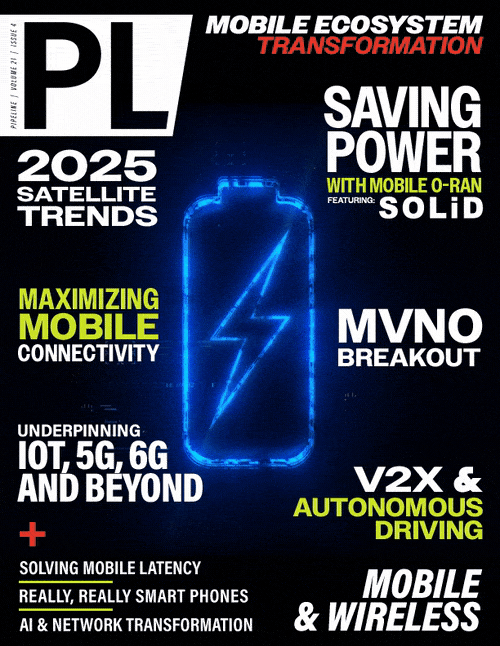Satellite’s Role in Underpinning Mobile
and Wireless Networks
By: Joakim Espeland

Mobile connectivity and wireless networks are critical in today’s world, driving innovation, connecting people globally, and enabling essential services and applications. With the drive toward ubiquitous connectivity, the proliferation of IoT devices, and with the rollout of 5G networks and 6G in the horizon, there is increasing pressure on terrestrial infrastructure to meet user demands for high speed, seamless and universal coverage. Yet just as satellite is not the best solution to meet all user’s connectivity needs, terrestrial networks are unable to provide connectivity in every area around the globe. As the demands on mobile and wireless networks grow, so too does the need for innovative solutions that ensure performance and reliability.
Satellite technology offers unique advantages such as wide-area coverage, and the ability to reach underserved regions and areas where terrestrial towers cannot be constructed such as offshore and in inhospitable regions. Satellite technology is, however, not only critical in providing connectivity to those areas lacking in terrestrial networks or where terrestrial networks have failed following a disaster. It also enables telco operators to expand their coverage, enables Direct-to-Device connectivity, provides 5G backhaul, can be used to help telcos manage an unexpected surge in demand, and additionally plays a key role in providing data for IoT systems. And as we move towards the 6G age and a future network of networks, satellite networks will unquestionably be instrumental in the new landscape.
An Industry Transforming
It’s well known that the satellite industry is going through a period of transformation, and this change is future proofing satellite’s role as an integral component in the mobile and wireless industry moving forward. Both the ground segment and space segment are evolving rapidly in line with technological developments, and to better meet consumer needs. LEO mega constellations are reshaping the industry, and there’s also a shift toward multi-orbit networks operating across LEO, MEO and GEO, which altogether is enabling the industry to better meet user’s needs.
The costs associated with developing and launching satellites have reduced significantly over recent years, leading to a shift in market dynamics. In a relatively short space of time, the industry has moved from having a small number of satellite operators providing the bulk of the world’s satellite services, to the current landscape which sees many new players having entered the playing field, offering services that were not previously available. Satellite connectivity is more accessible and more effective than ever before, yet it cannot meet the needs of consumers single handedly. It’s becoming increasingly apparent that satellite operators and telco providers need to work together in order to meet the worlds connectivity needs.
Adapting to a New Landscape
However, integrating satellite capabilities into mobile and wireless networks isn’t without its challenges. The emergence of multi-orbit constellations, a shift toward software-defined satellites, and the transition to cloud-based architectures are reshaping how the satellite industry can support terrestrial networks. These advancements are enabling greater flexibility and scalability but also require the industry to adopt new approaches to ensure seamless interoperability and efficient spectrum use.
One of the most pressing challenges facing both the satellite and mobile industries is spectrum efficiency. RF spectrum is a finite resource, and its efficient utilization is crucial to ensuring uninterrupted service. If satellites and terrestrial networks operate within the same frequency bands, there is a risk of overlap and therefore interference. This overlap between terrestrial and satellite spectrum usage underscores the need for innovative strategies to efficiently manage the spectrum.
Advanced signal processing techniques, dynamic spectrum allocation, and interference mitigation strategies including robust testing mechanisms to ensure RF equipment is operating optimally are just a few ways the satellite industry is helping to optimize spectrum use. By working collaboratively with the mobile and wireless sectors and the International Telecommunication Union, satellite operators and service providers can help ensure that spectrum is used efficiently to support the growing demands of connected devices and high-bandwidth applications.



















